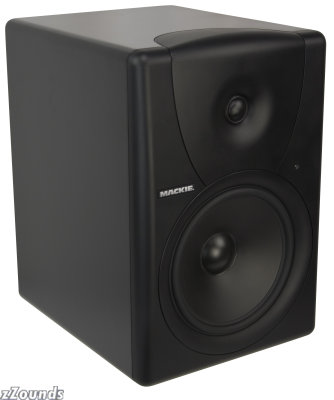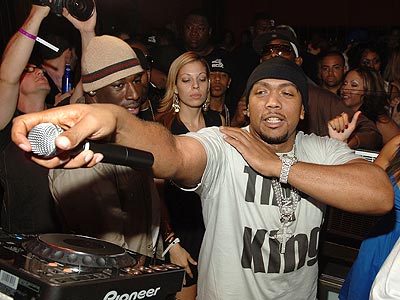Many people think the only way to make a living off music is to get signed to a major label. The advantages of being signed to a major label is better promotion and distribution, but the downside is these services are paid for by your record sales. Even the handful of popular musicians who do get signed to a major label and get a hot single or two find it hard to live off of record sales.
Something you probably didn’t know:
The profit from 500,000 units sold on a major label is equivalent to 8,000 independently.
So if your album goes gold on a major label, the average amount of profit is around $50,000! Of course that doesn’t count shows, sponsors, or publishing, but considering how long it took to get signed, make the album and promote the album, makes living off album sales an unrealistic expectation.
Let me break down what A&R’s look for.
1. A new sound – The key to getting their attention is to stand out from the rest while not straying too far from what is hot right now or what they feel will be hot for several years to come. You need a balance of popular and eclectic style, which will sound new, but within the comfort zone of the sounds of past successful acts.
2. Single-ready – In an era of Itunes, labels know that single sales will generate more money than full album sales with new artists. Keep your song structure simple by having an infectious chorus that you can feel coming. Most popular songs are built around the “verse-chorus-verse-chorus-verse-hook-chorus” formula and make sure you build around that conventional formula.
 3. A following – Labels need acts that are ready to put on a good show and already have a good track record with shows. Putting on a good show can make or break an act and labels don’t have time to wait for their artists to find their groove.
3. A following – Labels need acts that are ready to put on a good show and already have a good track record with shows. Putting on a good show can make or break an act and labels don’t have time to wait for their artists to find their groove.4. Youth – Labels want young artists because the most revenue comes from the younger audience. Sex sells and having attractive, young artists is more marketable while giving upside to labels who want longevity. Even though I might be biased due to my musical taste, I think it is safe to say that the Jonas Brothers are the big thing right now because of their image. Their music is nothing special, but they are young and have the “heartthrob” image to capture the young, female audience no matter how good their music is.
 Having a strong press-kit is what A&R’s look for when finding artists. A press-kit consists of:
Having a strong press-kit is what A&R’s look for when finding artists. A press-kit consists of:1. Artist Bio – A one-page over-hyped bio with words like “the artist has matchless potential” is pretty much the default format used by most up-and-comers. However, make sure your bio tells your story of how you grew up and started playing music. This shows your accomplishments and your drive to accomplish more.
2. CD Demo – Your three best songs. The first song must be your best song because if it sucks the other two songs won’t make it to the A&R’s ears. If your music has explicit lyrics, including radio versions along with the original versions is a good idea to show them that you are radio-ready. Mastered tracks aren’t essential, but it is recommended because it shows you know what you are doing and you are serious about your craft.
3. Photos – Get some professional photos taken because pictures project your artist image. In reality, some overwhelmed A&R’s won’t even listen to your music if you don’t have the “look” of a star. Yeah it’s a bit shady, but that’s the harsh reality of the industry. Plus having nice pictures show you are serious about what you are doing and are camera-friendly.
Plus, EPK's (Electronic Press Kits) are becoming more popular in a more up-to-date and presentable CD-ROM format.
If you are lucky enough to receive a contract after sending in your demo, make sure you review it thoroughly before you think about signing it! Countless artists have signed contracts that sounded good in the short term, but ended up feeling trapped in the long run. Look for these keywords when reviewing the contract:
1. Advance – This is the budget you get for making the album. Most of the time they want the money back once the product hits the shelves and wasting money on an album that doesn’t sell can get you in debt! This is where stars can afford to buy two Timbaland beats at $250,000 a pop in hopes of going platinum. Having a small advance limits what you can do, but a large advance can encourage more spending than needed. A larger advance creates more potential, but be responsible and use the money wisely.

2. Percentages/Royalties – This is where you find out how much cut you get back from sales. Artists generally receive the least money from record sales and more from shows, guest appearances, and other ventures. Owning your own publishing is huge because if you land a timeless hit, you can still get your money per play even after you are past your prime. (Michael Jackson, The Beatles = MONEY)

 3. Promotion/Distribution – This is the most overlooked part of a contract and sometimes it isn’t even included. The main advantages of being on a major label is because they have promotion and distribution and if they don’t do a good job, then why be on a label? Bobby Valentino recently opted out of his Def Jam/Disturbing Tha Peace deal because of the lack of promotion and distribution. Even with a Timbaland-produced first single, the album flopped. Advertisements, guest appearances, and shows weren’t as potent as his last album and the record sales suffered.
3. Promotion/Distribution – This is the most overlooked part of a contract and sometimes it isn’t even included. The main advantages of being on a major label is because they have promotion and distribution and if they don’t do a good job, then why be on a label? Bobby Valentino recently opted out of his Def Jam/Disturbing Tha Peace deal because of the lack of promotion and distribution. Even with a Timbaland-produced first single, the album flopped. Advertisements, guest appearances, and shows weren’t as potent as his last album and the record sales suffered.Filled with industry jargon and big words, music contracts are often hard to understand and even misleading. Before you sign, make sure you have a lawyer review it. It may cost a pretty penny, but if you are close to signing it is always good to have an expert opinion before you sign your life away.
Negotiating is always an option, if both parties aren’t happy, the deal isn’t truly a “deal.”























